Design Team Structure: Ideal Setup for Small, Medium & Large Organizations
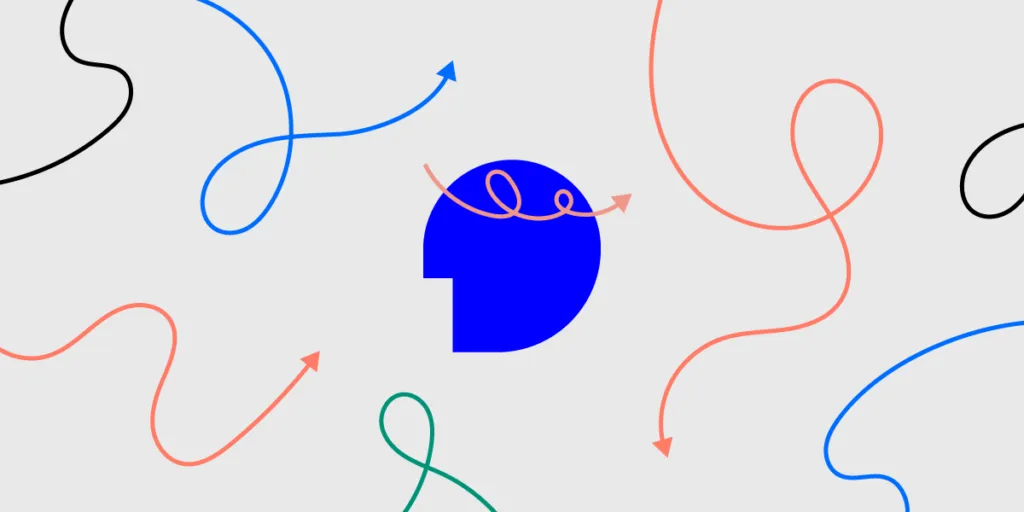
Gone are the days when design was considered as a ‘nice to have’ in most organizations. Today, design is an integral part of successful companies with McKinsey reporting that companies that invest in design see a 32% increase in revenue and a 56% increase in shareholder returns.
Design teams that are structured properly are the heart and soul of great design that drives profits. This article will explain the different types of design team structures and the ideal structure for organizations of different sizes.
Increase efficiency of your design team and improve cross-team collaboration. Get access to UXPin’s technology that helps you bring fully interactive UI components to the design editor and build production-ready prototypes in minutes instead of hours. Discover UXPin Merge.
What is a design team?
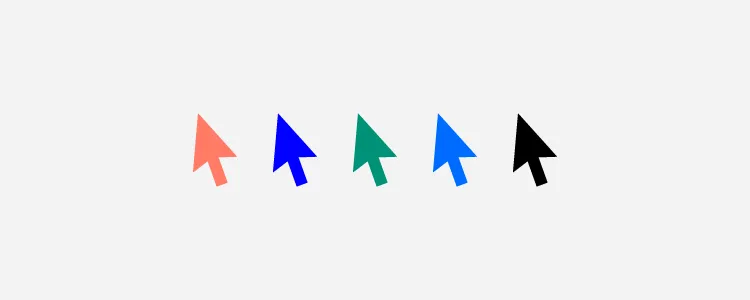
A design team can be made up of one designer or a group of designers who play different roles, using different tools and methods to achieve one common goal. The common goal can be building a website, designing a mobile application, or any other design project.
Types of design team structures
The structure of a design team refers to the hierarchy of different designers in the team and the different roles and responsibilities that they have. It is the organizational chart of the design team. There are four types of design team structures: centralized, embedded, flexible, and contractual.
Centralized design team structure
In this structure, the entire design team works together in a central location with one decision maker. Large design teams have several design managers who manage individual designers. These design managers then report to a single person mostly the Director of UX or the Vice President of UX.
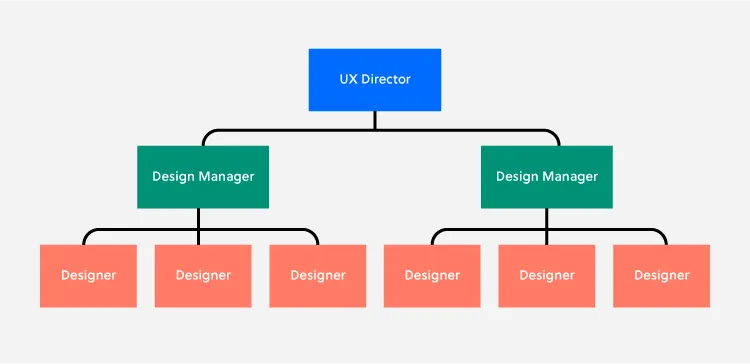
Centralized design teams work like agencies in the sense that they work on different design projects within the organization. The workload is managed by the design managers or the Director of UX.
The benefits of a centralized design team are:
- Easy collaboration and sharing of feedback within the design team.
- A unified design experience because the design team shares the same vision and design resources.
- Reduced internal team conflict because of clearly defined roles within the design team.
- Wide range of learning opportunities for designers when they work on different design projects.
This design team has several disadvantages which include:
- Isolation of the design team.
- A slower design process leading to time wastage.
Embedded design team structure
Here, designers are embedded in several cross-functional teams within an organization and they report to the leader of the team. Designers get to work with developers, product engineers, and marketers on a specific product, feature, or line of business.
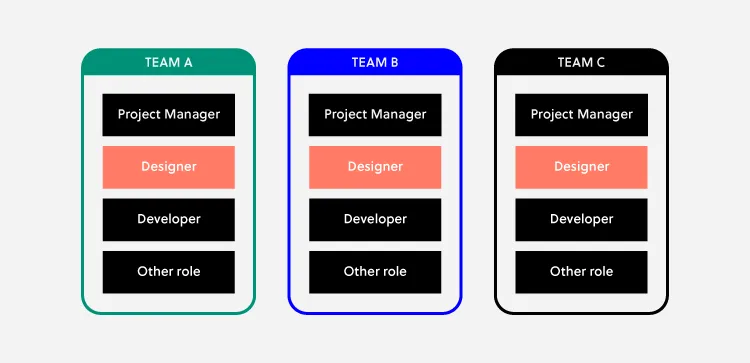
They are also known as decentralized or distributed teams and they have the following advantages:
- Improves cross-departmental trust and collaboration.
- Increases the speed of product development.
- Provides designers with a chance to be experts on a specific type of project.
This team structure comes with some drawbacks which include:
- Designers can be outnumbered in a team which might lead to their opinions being disregarded.
- If there is no centralized design system, distributed teams can do a lot of repetitive work which wastes time and resources.
- There might be little improvement in the design process if no one is in charge of improving it.
Flexible design team structure
In the flexible design team structure, designers are part of cross-functional teams and report to the team leader and they also report to a central design leader. This in-house design team structure is a hybrid of centralized and embedded design team structures. These design teams are flexible because they can be moved around easily to meet changing organizational design needs.
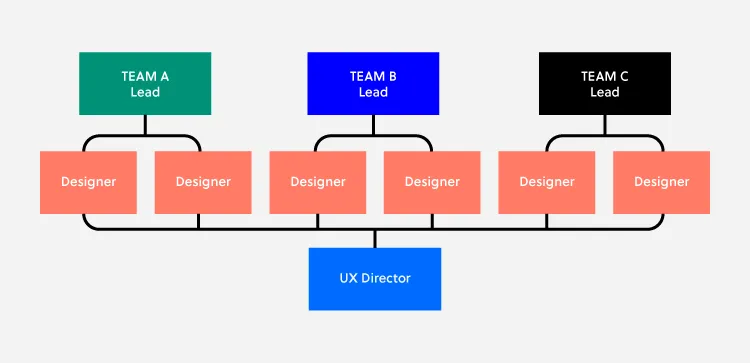
In the flexible team structure, the daily activities of designers are directed and supervised by the team leader. Additionally, design team management is done by the design leader and there is collaboration with other designers in the form of design reviews.
The benefits of the flexible design structure are:
- Increased flexibility to meet any arising design needs.
- More focus on the design process as a result of the double oversight.
- Improved collaboration between design and other product teams.
The drawbacks include:
- There can be confusion among designers on which leader has the final say in design decisions.
- The structure might be hard to implement in large organizations.
Contractual design team structure
An external design team can be hired on a contractual basis to fill design gaps. Small organizations that don’t have enough budget for a full-time designer can hire a design team on contract. Similarly, organizations with in house design teams can experience spikes in their design workload or gaps in the skill set of in house designers. In both cases, contractual design teams can help fill the shortfall in bandwidth and expertise.
Ideal design team set up for small, medium, and large organizations
The right design team structure for your organization will depend on many factors. These are: the size of your organization, the type of design projects, and the capacity of your design team in comparison to design demand. Nevertheless, there are some design team structures that are best suited for organizations of different sizes.
Ideal design team setup for small organizations
For small organizations, the decentralized model where a designer is attached to a cross-functional team is most suitable. This designer can be in house or contracted. The best type of designer to hire for small organizations is one who has design leadership skills. A design leader will be able to advocate for the importance of design to the executives and create a strong vision. This will create the foundation for building a strong design team as the organization grows and hires more designers.
Ideal design team setup for medium organizations
As an organization grows, more designers are hired. The centralized model is more suitable for medium-sized organizations because the design leader will be useful in creating a common design vision and in managing the day to day activities of the designers. A centralized design team structure will make it easy for designers to share knowledge and give each other feedback.
Ideal design team setup for large organizations
Once an organization has a high design maturity and a large number of designers, the flexible or hybrid team structure works best. The design leader will be responsible for ensuring that designers collaborate well and for creating common design resources such as design systems.
On the other hand, the team leader will be responsible for ensuring that the design team collaborates well with other teams such as the product or engineering teams. This team structure gives large organizations the best of both worlds.
Best practices for building a strong design team structure
Hiring designers and putting them into teams is not enough, you need to ensure that your design team has enough resources and that it is properly managed. Here are a few strategies to help you get started:
Ensure that they have access to the best tools
Design tools can streamline the design process and save your company time and money. An all in one tool like UXPin makes it easy for your designers to design, prototype, and collaborate in one place. This tool will help your decentralized designers work well with developers because it bridges the gap between design and development. Your team can share feedback with contracted designers and other stakeholders easily.
Make growth and development a priority
In order to create an engaged design team, give them feedback that helps them improve their skills. Schedule regular one-to-one meetings with every designer on your team to give them feedback and to find out if they need additional support.
Build a culture of design strategy
A culture of design strategy helps your design team to play a strong role in driving business goals. It makes it easy for other departments to see the value of design which improves the morale of your team.
You can create a culture of design strategy by training your designers to be customer-focused and by aligning design goals with business goals. Design strategy should guide everything that your design team does.
Increase your design team’s efficiency
Adding new team members doesn’t always equal better collaboration and being more productive. Sometimes you need to work on your process.
If you want to create efficient, well-designed process, here’s something for you. UXPin’s Merge technology makes it easy to bring interactive components to the prototyping process and build prototypes 10x faster. Check what it is all about. Discover UXPin Merge.




